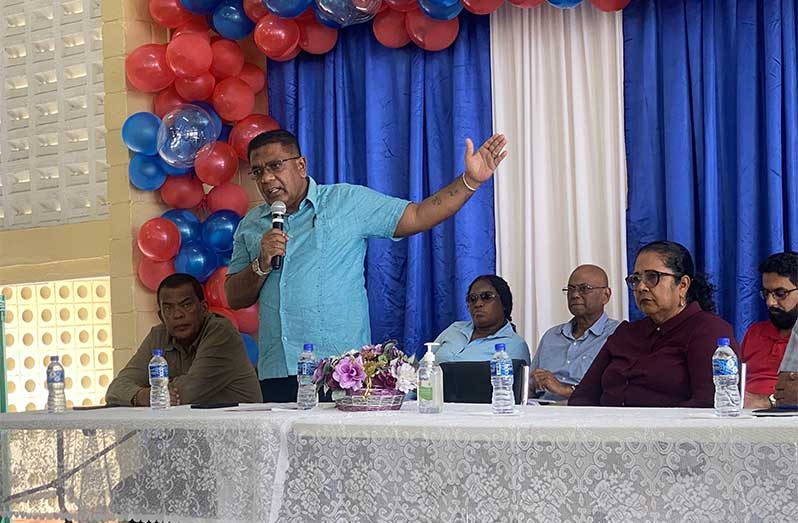IN a strong show of support for rice farmers grappling with storage and market access challenges on the Essequibo Coast, the Government of Guyana has announced plans to construct a drying facility in Region Two.
The initiative, revealed by Minister of Agriculture, Zulfikar Mustapha, during a meeting with farmers at the Anna Regina Secondary School Auditorium on Wednesday, is seen as a strategic move to alleviate mounting pressures in the middle of a high-yield rice season.
The announcement follows weeks of concern among farmers over limited market demand, fewer buyers, and a surplus of harvested paddy—a combination that has left many with unharvested fields or long waits at milling facilities already at capacity.
“We understand the frustration farmers are facing due to this surplus,” Minister Mustapha said. “Our goal is to ensure you get the maximum value for your paddy and have the infrastructure in place to support future harvests, including drying facilities that may be either government or privately operated with state support.”
A site for the facility will be identified soon, and it is expected to serve as a long-term solution to the region’s recurring post-harvest difficulties. This latest intervention follows an urgent meeting between farmers and Vice President Dr. Bharrat Jagdeo on April 12, during which several key issues were raised.
IMMEDIATE RELIEF MEASURES
While the drying facility will take some time to establish, immediate measures have already been implemented. In a bid to facilitate cost-effective transportation, the government has removed freight charges for rice and paddy transported via ferry out of Region Two. Truckers are now required to pay only vehicle fees, and they are permitted to return with cargo, opening new logistical routes for moving excess harvests.
The government is also exploring the use of buying agents to locate new markets and secure better prices for farmers. Minister Mustapha disclosed that approximately 556,000 tonnes of paddy are still to be harvested across the region—highlighting the urgency of intervention.
“Thanks to the intervention of Vice President Jagdeo, we’ve already seen significant progress,” the Minister noted. “Several millers have stepped up to increase their purchase volumes, and that’s helping to move things in the right direction.”
Among those stepping up is Nazeemul Hakh of Golden Fleece Rice Investment, who pledged to purchase 300,000 tonnes, having already accepted 61,000 tonnes over the past weekend. Another miller, known as “Major,” has committed to buying 20,000 tonnes, while other millers have also indicated readiness to expand their intake.
In a further bid to improve the economic position of farmers, Minister Mustapha announced that the government will contribute $300 per bag of paddy sold to millers—a financial injection designed to directly boost farmer earnings.
The Minister also shared plans to assign a representative from the Guyana Rice Development Board (GRDB) to Region Two. The representative will act as a liaison between farmers and the Ministry, ensuring that local concerns are communicated and addressed promptly.
FARMERS EXPRESS HOPE AND GRATITUDE
The response from the farming community has been positive. Amrit Persaud, a rice farmer from the region, expressed appreciation for the Vice President’s swift intervention and the government’s tangible support.
“We are happy for these interventions. We just hope we get good grading and can continue to trade. We want to thank the Government—especially Dr. Jagdeo—for stepping in,” Persaud said.
Farmers also hailed the planned drying facility as a much-needed asset for future harvests, especially in times of abundance.
“We’ve been producing more, but the market hasn’t kept pace,” said one farmer. “A drying facility will really help us manage during these bumper crops.”
As the government rolls out both immediate and long-term support, farmers on the Essequibo Coast are optimistic. With better infrastructure, market access, and financial incentives on the horizon, the rice industry in Region Two may be better equipped to weather future fluctuations—and continue feeding Guyana’s people and economy.



.jpg)











